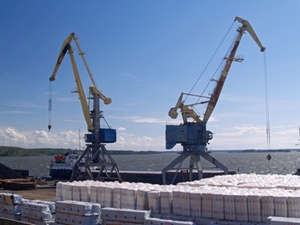Underpinning this economic backbone is the state’s network of ports which enable the movement of large volumes of goods in and out of Queensland.
The coast line is also home important tourism ventures, with areas like the Great Barrier Reef – one of Australia’s best-known natural wonders.
To balance the needs of environmental protection with economic growth, the state government has recently announced its new guidelines which will guide the future development of the state’s port infrastructure.
These guidelines establish five key ports that are designated as Priority Port Development Areas. These include major facilities like Brisbane port and reach as far north as Townsville.
Greater development of Queensland’s port services will be focussed on these facilities and they will see the majority of long term expansion. This forecast growth is to meet the demands of exporters and importers, especially in the mining sector.
The upgrading of these facilities will see more opportunities for apprenticeships in Queensland, as greater construction projects are undertaken at these ports. In the long term, there will also be demand for areas like welding and boat building.
By increasing the export potential of coastal ports, there will also be opportunities within the mining sector. As pressure on supply chains is eased, mining operations will be more efficient, potentially creating further opportunities for apprentices in Queensland’s interior.
With $40 billion passing through Queensland’s northern ports in 2012-13, according to the Queensland Resources Council, these developments will bring new opportunities to the region.
New developments limited to protect the Barrier Reef
Outside of these five main ports, there have been significant limits placed on port development. All dredging activity and port expansion within the Great Barrier Reef area will be prohibited for at least the next 10 years in order to protect the fragile ecosystem. This balancing act is crucial for ensuring that economic growth does not have a negative impact on the environment.
The state government is also looking at new guidelines to guide dredging practices outside of the Great Barrier Reef to ensure that Queensland’s other aquatic environments are not damaged by expanding port facilities.
These initiatives to protect the state’s ecosystems will continue to boost the tourism sector in the state, which is driving demand for a number of services including chefs and bakers across Queensland.
By Leanne de Toerkenczy, Public Relations Coordinator

